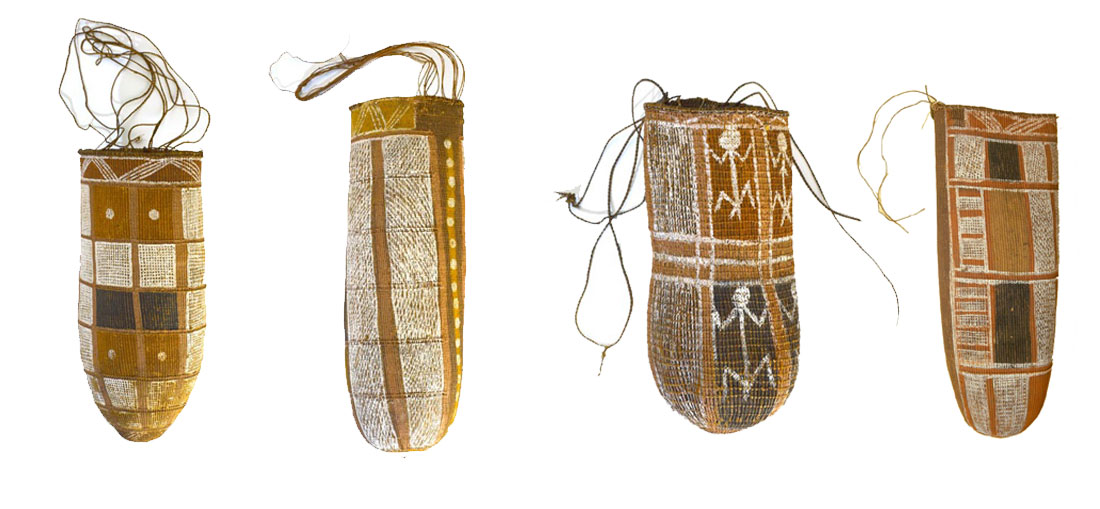 Pandanus baskets, 1912-13
Pandanus baskets, 1912-13
TLF ID R7582
These are four conical pandanus baskets from western Arnhem Land in the Northern Territory. All are painted with natural pigments and date from 1912-13. They are between 43 cm and 76 cm high and their diameters range from 14 cm to 24 cm.
